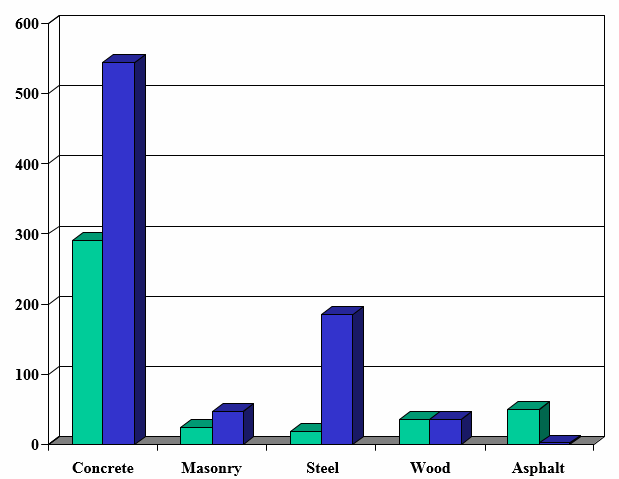N.G. Shrive[1] and G. Sturgeon[2]
- Professor, Department of Civil Engineering, University of Calgary, 2500 University Drive NW, Calgary, AB T2N 1N4, shrive@ucalgary.ca
- Code Engineer, Masonry Canada, 4808 30th Street SE, Calgary, AB T2B 3K5 mcccalg@cadvision.com
ABSTRACT
Masonry Canada and the Canadian Portland Cement Association commissioned a survey of current post-secondary education on five structural and construction materials (Concrete, Steel, Wood, Masonry, Asphalt). They wanted to know what was taught in Faculties of Architecture, Departments of Civil Engineering in Universities and in technology programmes at Colleges/Institutes of Technology. The survey was conducted in two parts. First, Institutional web pages were searched for current course offerings. Where none were found, the Institution’s academic calendar was examined. Descriptions of relevant courses were copied and entered into a Table for each Institution. Secondly, these Tables were sent to the respective Institutions with a request for someone to complete the Table as per the accompanying, completed Table for Civil Engineering at the University of Calgary. Academic programmes for which no course information could be obtained from public documents, or for which the course descriptions were too broad for interpretation in the required context, were asked to supply course information as well as lecture-hour and student data.
The response rates were sufficient (55-70%) for a realistic assessment of what is currently taught. Information supplied to responding institutions was over 90% correct, allowing analysis of course contents of non-responding units to be undertaken with confidence. The overall result is that concrete receives the most attention of the five materials considered, in all categories – architecture, engineering, technology; compulsory and optional; undergraduate and graduate. Except for a few minor occasions, masonry is solidly last, doing best in architecture programmes and worst in compulsory undergraduate structural design courses where it receives less than 3% the attention that concrete does. Steel is typically a close second to concrete; there is a gap to wood, then asphalt, and finally another gap to masonry.
If the masonry industry does nothing to garner the support of the relevant components of the higher education system, the use of masonry in Canada will decline further over the next few years.
Key words: Masonry education, Concrete education, Post-secondary institutions
MASEDU01



